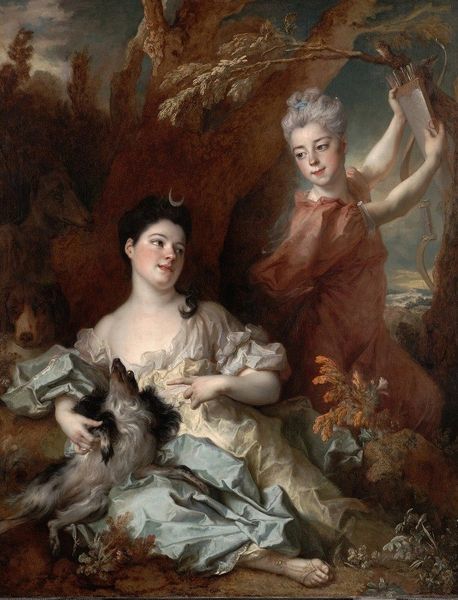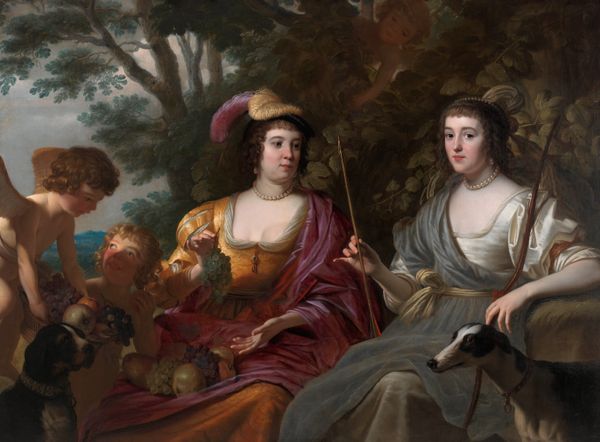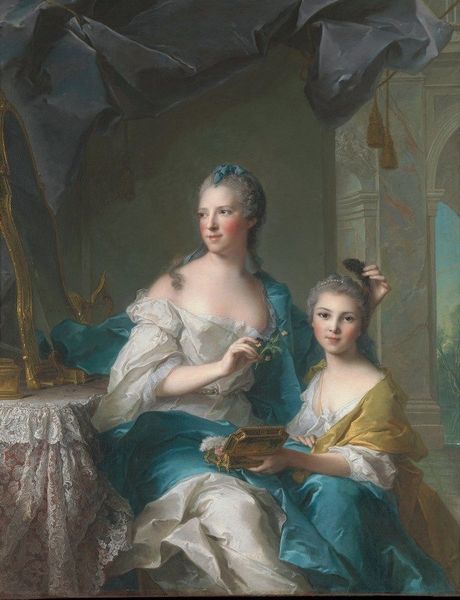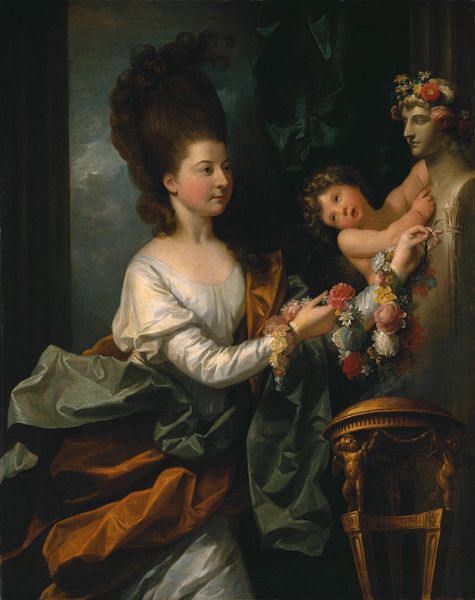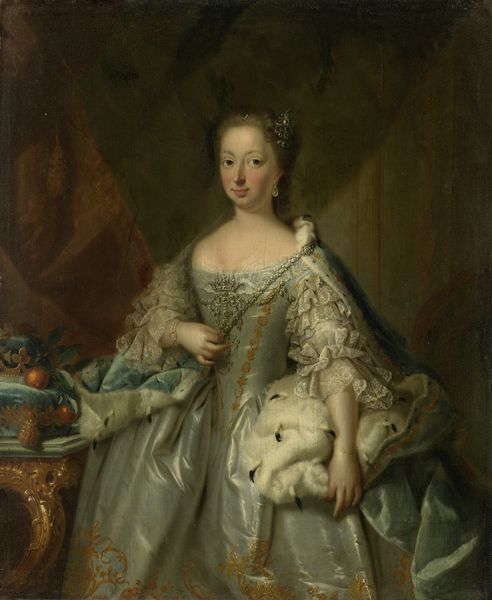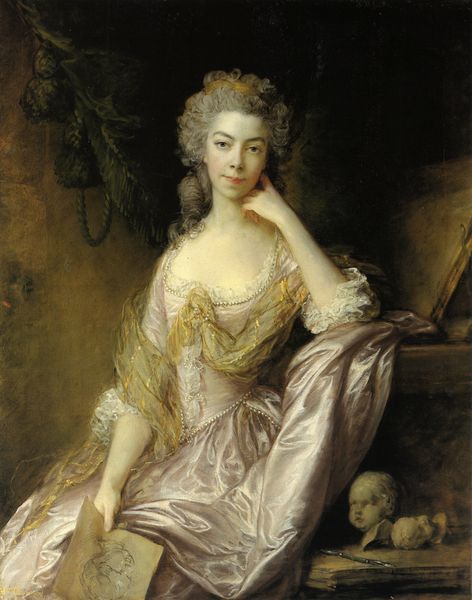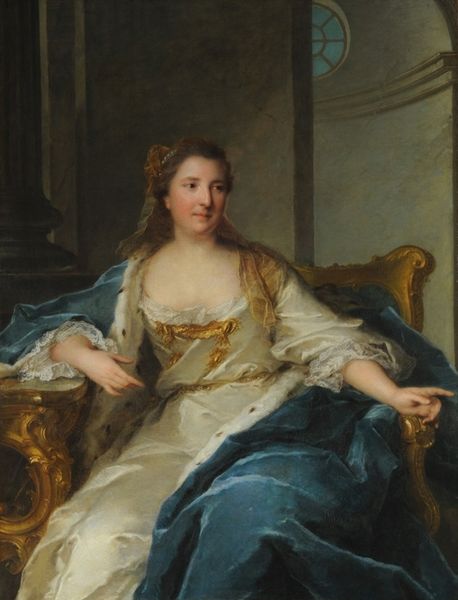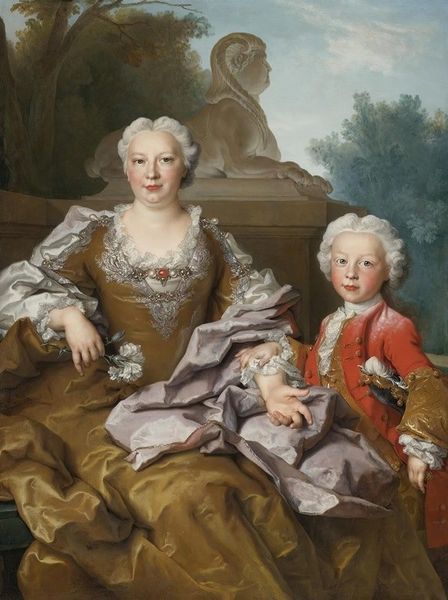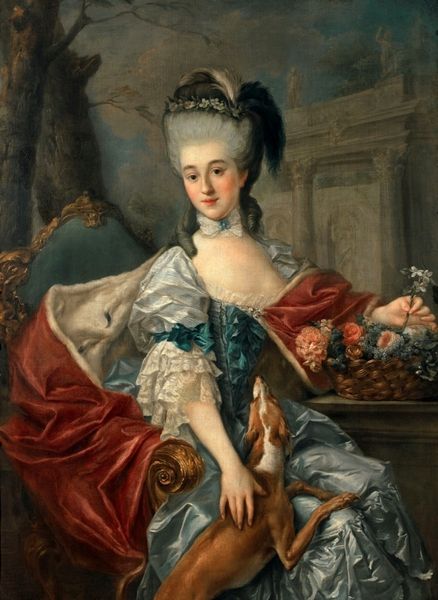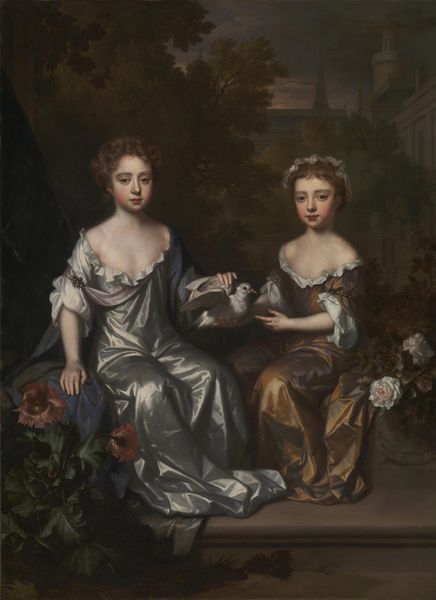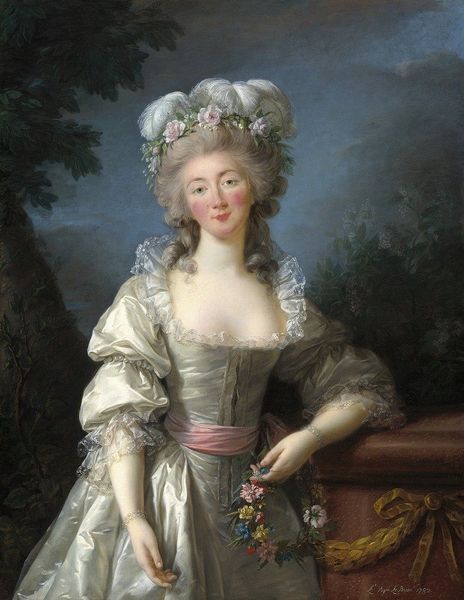
Portrait of Marguerite-Elisabeth Forest de Largillierre and her son Nicolas c. 1712
0:00
0:00
painting, oil-paint
#
portrait
#
baroque
#
painting
#
oil-paint
#
oil painting
#
group-portraits
#
genre-painting
Copyright: Public Domain: Artvee
Curator: This Baroque portrait, painted around 1712, is entitled "Portrait of Marguerite-Elisabeth Forest de Largillierre and her son Nicolas." It's by Nicolas de Largillière, of course. Editor: Oh, what strikes me is the relaxed elegance. The light catches the mother's face so softly. It doesn't feel posed as much as captured, almost candid. Curator: It’s a fine example of Baroque portraiture becoming increasingly informal, reflecting social shifts. The mother, Marguerite-Elisabeth, isn't presented as just a symbol of status. We get a sense of intimacy. Editor: Definitely. And the rose that Nicolas holds out--what a wealth of significance a rose can carry! Here, it is surely symbolic of love, youth, beauty... fleeting beauty. Curator: Precisely. The rose could represent both earthly love and spiritual perfection. The detail and care the artist put into that single flower adds an intense layer of depth to their bond. The child extends the rose, he wants to share it with his mother; this dynamic, with this gesture, becomes central to the reading of the entire canvas. Editor: Do you think that small dog is also playing a role in constructing that intimacy, almost creating a line from child to mother? And that dog! So full of character and charm. A symbol of fidelity, perhaps? Curator: Yes, definitely! Dogs often represent fidelity and loyalty in art, subtly reinforcing the themes of devotion and familial bonds. These carefully chosen objects underscore the sitter's social standing and cultural values. The choice to have her son and a beloved pet with her also showcases the idea that family is key. Editor: Seeing this has made me consider how portraits often become powerful projections of societal values about kinship, legacy, and of course, appearances. It almost makes me think about celebrity culture today. Curator: The presentation of the self has been a potent device forever. In "Portrait of Marguerite-Elisabeth Forest de Largillierre and her son Nicolas," we can still discern those layers, making this a lasting piece. Editor: Indeed. It’s fascinating how a single painting can unlock so many narratives about the past.
Comments
No comments
Be the first to comment and join the conversation on the ultimate creative platform.
